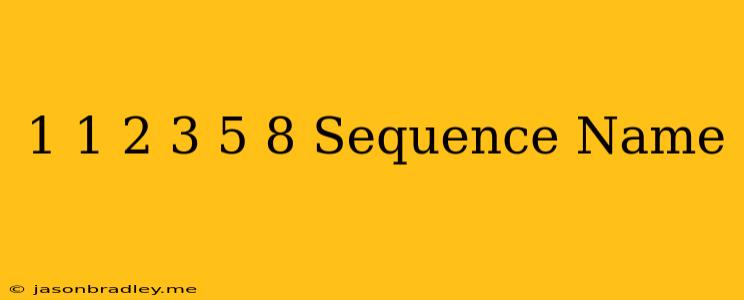What is the 1, 1, 2, 3, 5, 8 Sequence Called?
The sequence 1, 1, 2, 3, 5, 8 is known as the Fibonacci sequence. This famous sequence is named after the Italian mathematician Leonardo Pisano, better known as Fibonacci.
Understanding the Fibonacci Sequence
The Fibonacci sequence is defined by the following rule:
- The first two numbers in the sequence are 1 and 1.
- Each subsequent number is the sum of the two preceding numbers.
Therefore, to get the next number in the sequence, you simply add the last two numbers together. Here's how the sequence continues:
1, 1, 2, 3, 5, 8, 13, 21, 34, 55, 89, ...
Significance of the Fibonacci Sequence
The Fibonacci sequence appears in nature, art, and mathematics in surprising ways. It is often found in:
- Plant growth patterns: The arrangement of leaves on a stem, the spirals of a sunflower, and the branching patterns of trees often exhibit Fibonacci numbers.
- Animal bodies: The number of spirals on a snail shell, the arrangement of scales on a pine cone, and the segmentation of a honeybee's body often follow Fibonacci patterns.
- Art and architecture: The proportions of the Great Pyramid of Giza, the paintings of Leonardo da Vinci, and even the layout of the Parthenon are said to incorporate Fibonacci principles.
- Computer science: The Fibonacci sequence is used in algorithms for sorting, searching, and data compression.
The Golden Ratio
The Fibonacci sequence is closely related to the Golden Ratio, often represented by the Greek letter phi (φ). The Golden Ratio is approximately 1.618. As the Fibonacci sequence progresses, the ratio of consecutive numbers approaches the Golden Ratio.
For example:
- 8 / 5 = 1.6
- 13 / 8 = 1.625
- 21 / 13 = 1.615
The Golden Ratio also appears in nature and art, and its presence often contributes to the perceived beauty and harmony of objects and designs.
Conclusion
The Fibonacci sequence is a fascinating and pervasive mathematical pattern with applications in various fields. Its simplicity, elegance, and connection to the Golden Ratio make it a subject of continued study and wonder.
